
- 2021 Pebble Beach
- 2022 Pebble Beach
- 2024 Pebble Beach
- Mileage n/a
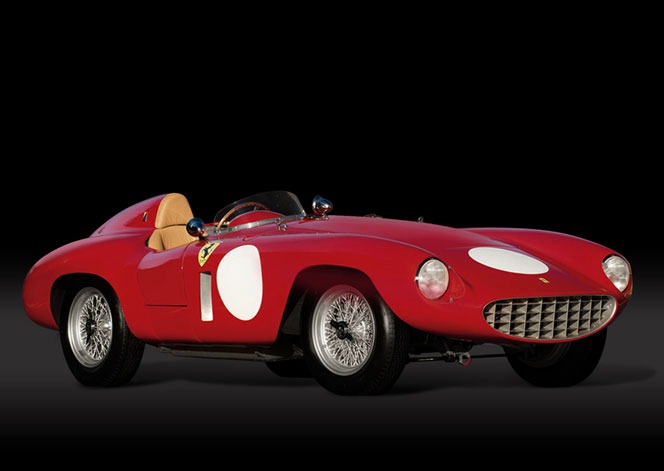
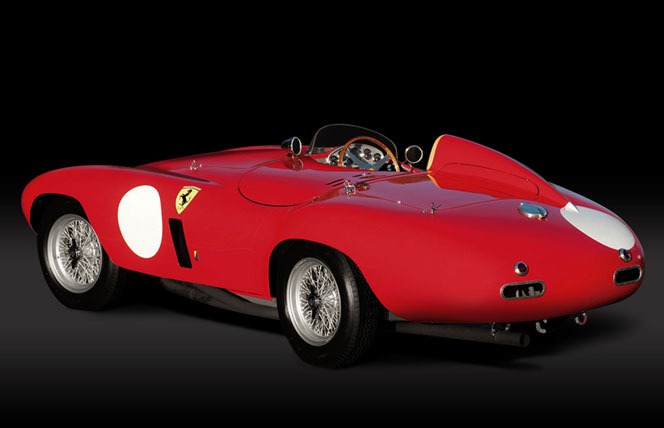
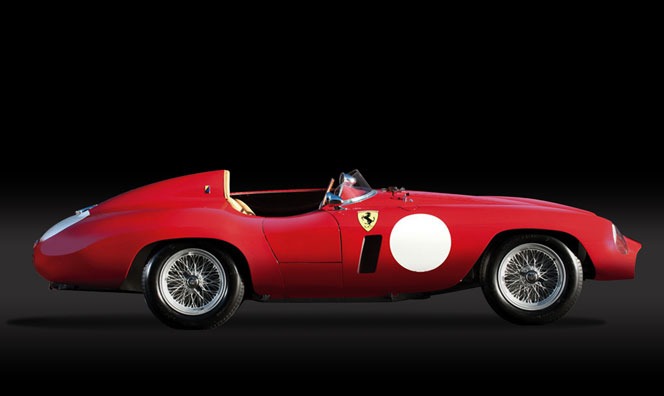
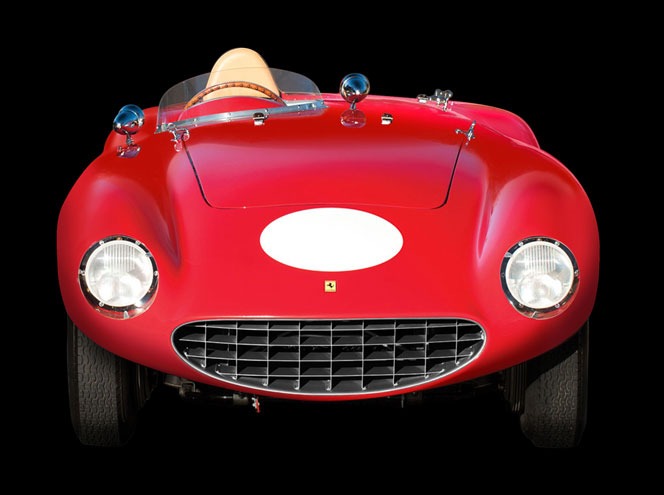
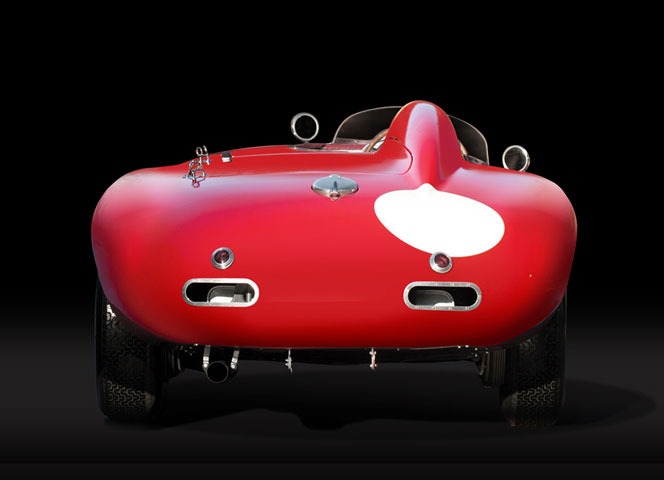
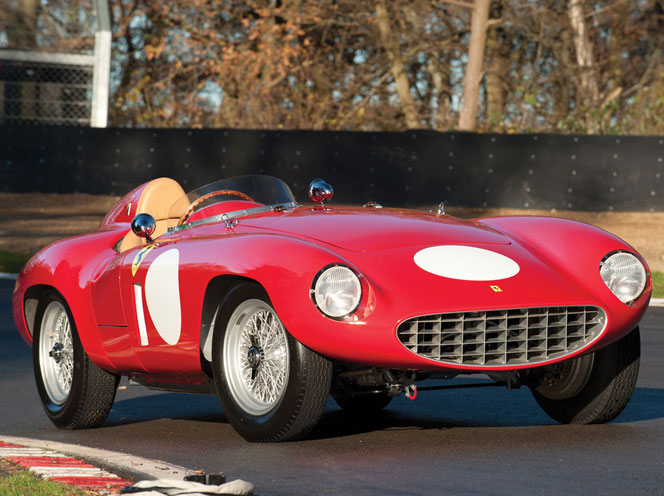
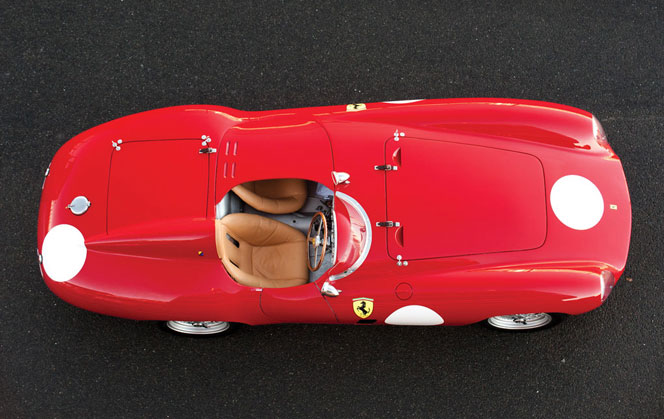
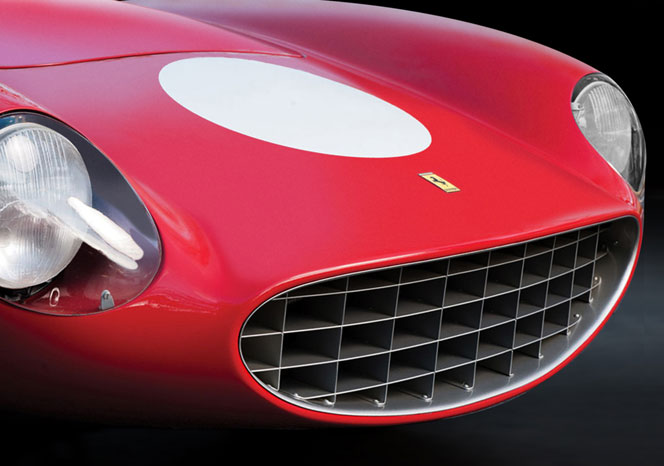
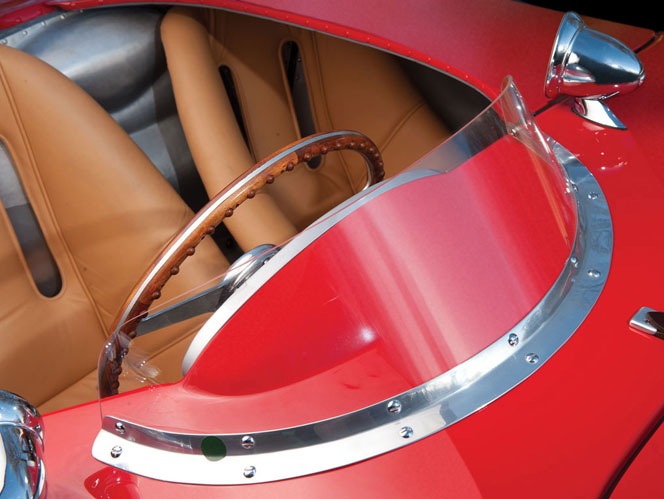
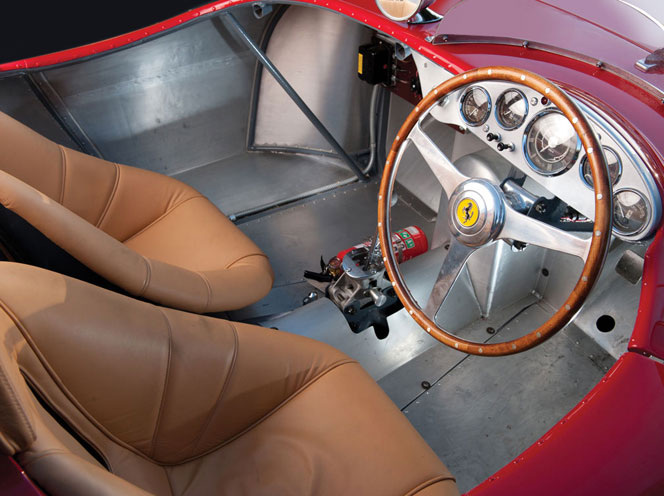
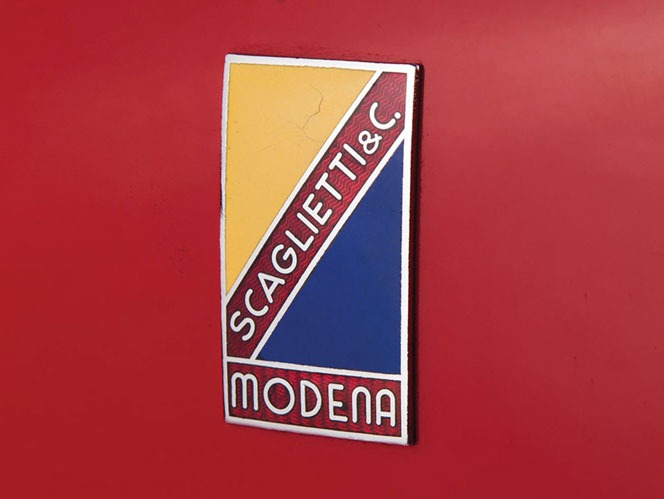
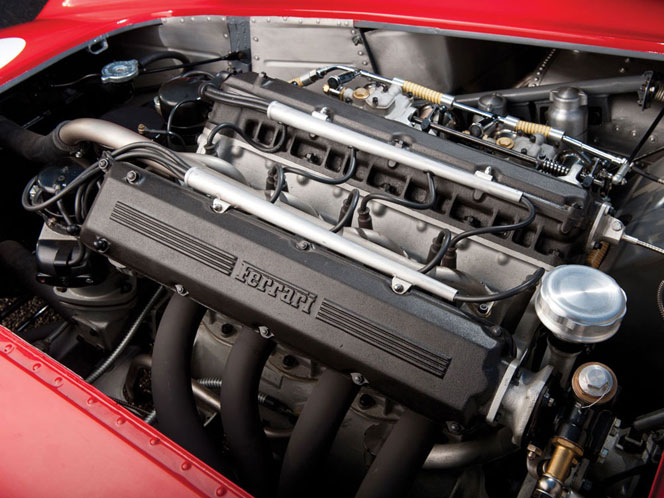
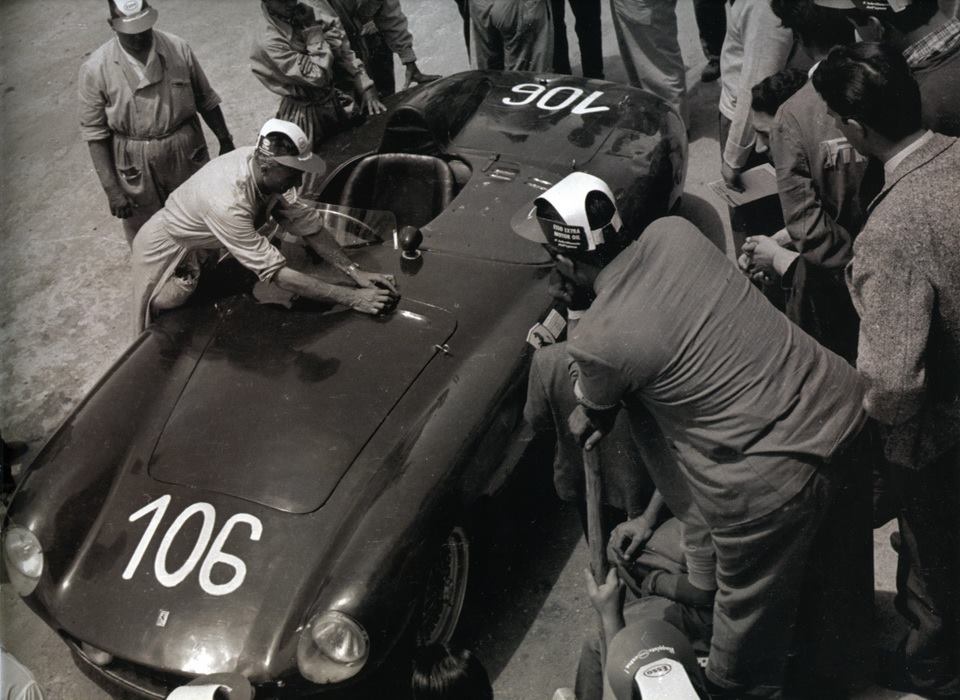
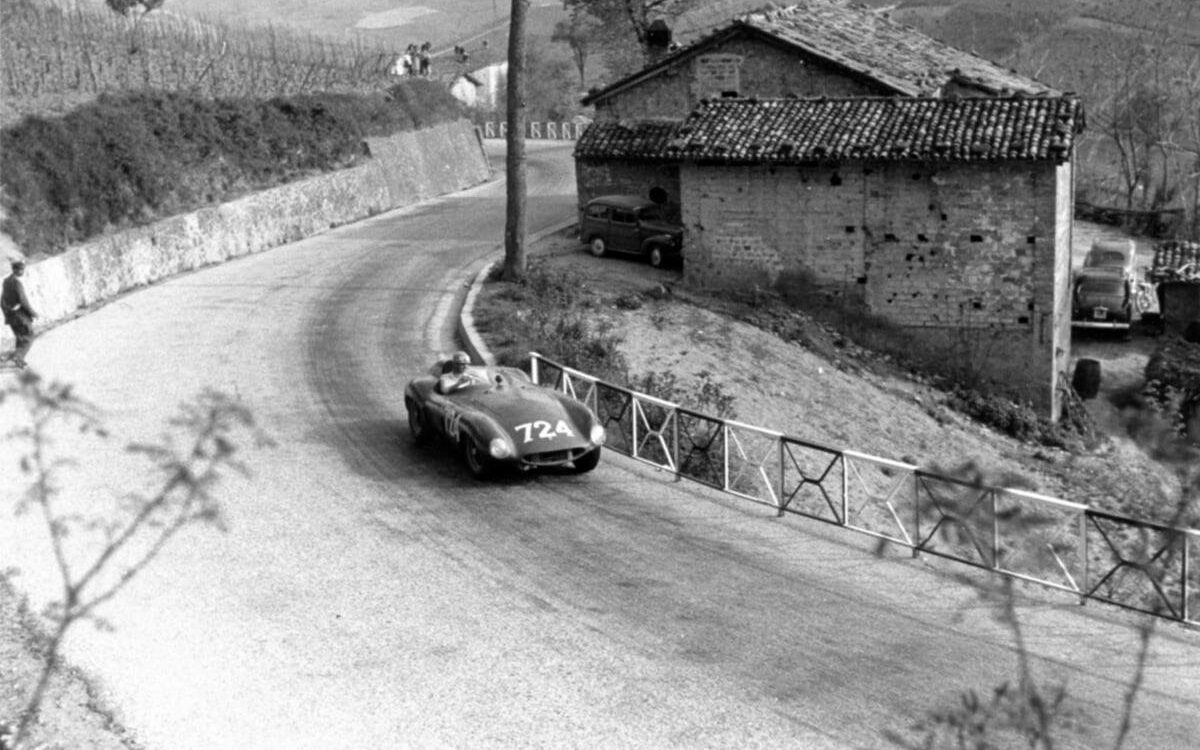














The Ferrari 750 Monza race car.
The Ferrari 750 Monza ‘s design, which anticipated the famous “lowered nose” of the famous 250 GTO, was the work of Dino Ferrari. Construction of the bodywork of almost all the examples, on the other hand, was carried out by Scaglietti. The engine of the “750 Monza” was derived from the in-line four-cylinder of the 500 Mondial, but it had a larger displacement, more precisely 3 L. This engine was consequently also more powerful than the one mounted on the aforementioned model, with its 260 hp. Suddetto engine also possessed conspicuous torque, which, together with the power, provided the model with good competitiveness in racing. However, the car, compared to the 500 Mondial, was heavier (760 kg versus 720 kg). The inline four-cylinder engine in question was designed by Aurelio Lampredi. The series of Ferrari engines with this cylinder arrangement originated in the early 1950s, when Enzo Ferrari decided to invest in this type of engine with the intention of replacing the V12s designed by Gioachino Colombo. Among the reasons that drove Enzo Ferrari to this decision was the higher fuel consumption of V12s compared to inline fours. In addition, rules derived from Formula 2 were applied to the 1952 Formula 1 World Championship, and this gave a strong impetus to the evolution of this type of engine. The first one that was developed, a 2 L in displacement, was successfully fitted to the 500 F2, which won two Formula 1 world titles (1952 and 1953). This engine was later installed in road cars. Later two more in-line four-cylinder engines were prepared, possessing a displacement of 2.5 L and 3 L; they were installed in two racing models, the 625 TF and the 735 S, respectively. Later the second type of engine was mounted on the 750 Monza. A further evolution of the inline four-cylinder, which had a displacement of 3.4 L, was later installed on the 860 Monza. The Ferrari 750 Monza made its debut on June 27, 1954 at the Supercortemaggiore Grand Prix held at the Monza Autodrome. In this race two examples of the model won the first two positions. On the top step of the podium went the pair Umberto Maglioli and Mike Hawthorn, followed by José Froilán González and Maurice Trintignant. In the other races of the 1954 World Sport Prototype Championship, the “750 Monza” made an important contribution to Ferrari’s final victory. The success was not repeated in the following season, which was the preserve of Mercedes-Benz thanks to the victories of the 300 SLR, and the Ferrari 750 Monza, although still competitive, failed to be decisive in winning the world laurel. The engine was an unsupercharged inline four-cylinder front and longitudinal. The bore and stroke were 103 mm and 90 mm respectively, which brought the total displacement to 2999.62 cm³. The compression ratio was 8.6:1, while the maximum power output of the powerplant was 260 hp at 6000 rpm. The timing system consisted of a double overhead camshaft that controlled two valves per cylinder. Fuel supply was provided by two Weber brand and model 58 DCOA/3 carburetors. Ignition was dual and the associated system included two distributors. Lubrication was dry sump, while the clutch was dual disc. The front suspension was independent, and had installed transverse wishbones and a similarly mounted leaf spring; the rear suspension, on the other hand, consisted of a De Dion axle, double struts and an upper transverse leaf spring. Both mounted Houdaille hydraulic shock absorbers. The brakes were drum brakes on all four wheels, and the steering was worm and toothed sector. Drive was rear-wheel drive, and the transmission consisted of a five-speed manual transmission plus reverse gear. The chassis was tubular steel. The body was a two-seater spider, and was the work of Scaglietti. The top speed reached by the Ferrari 750 Monza was 264 km/h.





Missing or wrong informations?
Carrozzieri-Italiani.com relies on thousend of users who help to populate the database. We do not guarantee the accuracy of the informations. Contact us if you want to contribute.
